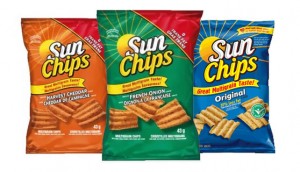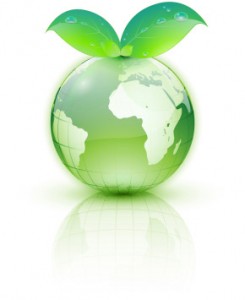As a marketer and advertiser who understands the importance of consumer packaging across the marketing mix (4 P’s – product, price, place, promotion) I am also concerned about how retail industries should be using more biodegradable and recycled packaging. Â I recognize that it comes down to the simple economics of cost and practicality as much as function, convenience and of course brand image, but much like the movement to rid styrofoam of CFC’s back in the late 80’s, there needs to be a new movement to ensure all, or most, packaging becomes recyclable, biodegradable and/or re-used.
While walking the local grocery isle I am often perplexed by the variety of packaging that seems to be well above and beyond what is needed to contain and promote the product. Excess plastic and non-functional design make some of these products difficult to purchase since the company hasn’t thought about its packaging strategy beyond cost. Yes, I am being general (there are probably many examples of eco-friendly packaging that are also functional) but there aren’t enough products with eco-friendly packaging available.
The folks at Frito-Lay are promoting their new eco-friendly and biodegradable Sun Chips bags which is a start, but why aren’t they extending this practice to all their packaging? (And, as a pet peeve, these new bags make a lot of noise.)
There are plenty of websites that share important information on environmentally responsible packaging (American Retail Supply, Molded Fiber) but the mainstream consumer isn’t going to go out of his/her way to purchase everyday products based on whether or not it has environmentally friendly packaging. The packaging industry as a group needs to make the changes. How can we develop the most cost effective packaging solutions that will fit in with marketing and function needs? The next aspect is training consumers to automatically recycle and re-use  most of what we use. There is so much “recyclable” stuff in our landfills only because we’re too lazy and it’s too inconvenient to recycle. According to Wasteonline.org: “Packaging can be defined as materials used for the containment, protection, handling, delivery, and presentation of goods. Packaging can be divided into three broad categories:
- Primary packaging is the wrapping or containers handled by the consumer.
- Secondary packaging is the term used to describe larger cases or boxes that are used to group quantities of primary packaged goods for distribution and for display in shops.
- Transit packaging refers to the wooden pallets, board and plastic wrapping and containers that are used to collate the groups into larger loads for transport, which facilitates loading and unloading of goods.
Because of its large volume, packaging waste tends to be very visible. Approximately 70% of primary packaging is used for food and drink which is often discarded in a dirty state and contaminated by residues of the original contents of the original contents.” Each of these three groups needs to be reviewed with an eye on being environmentally sound.
Again, how can we find ways to do the right thing by making packaging cost effective, marketable and functional as well as being environmentally friendly? Those that solve this puzzle little by little and on a grand scale will surely profit from its success.

